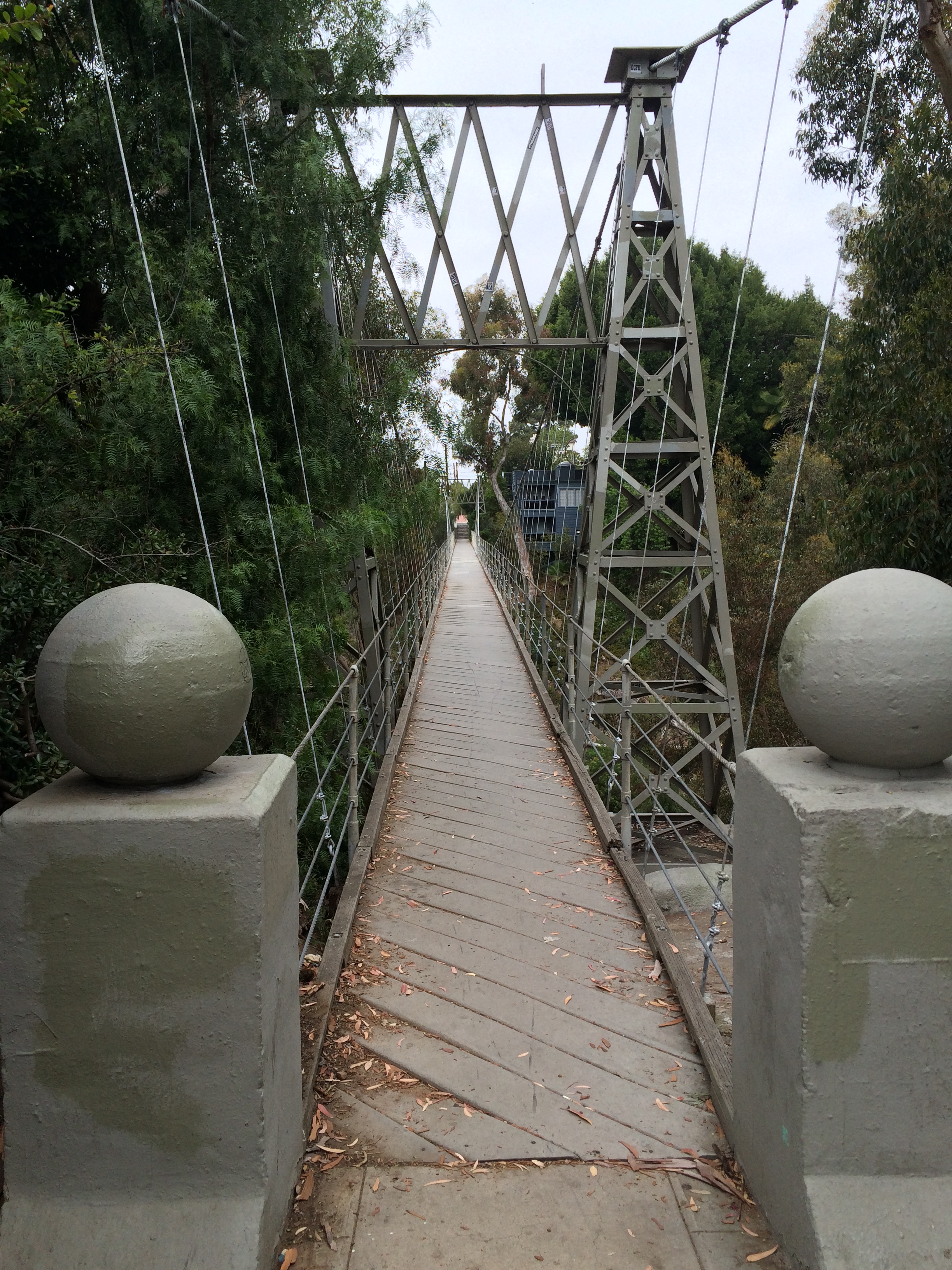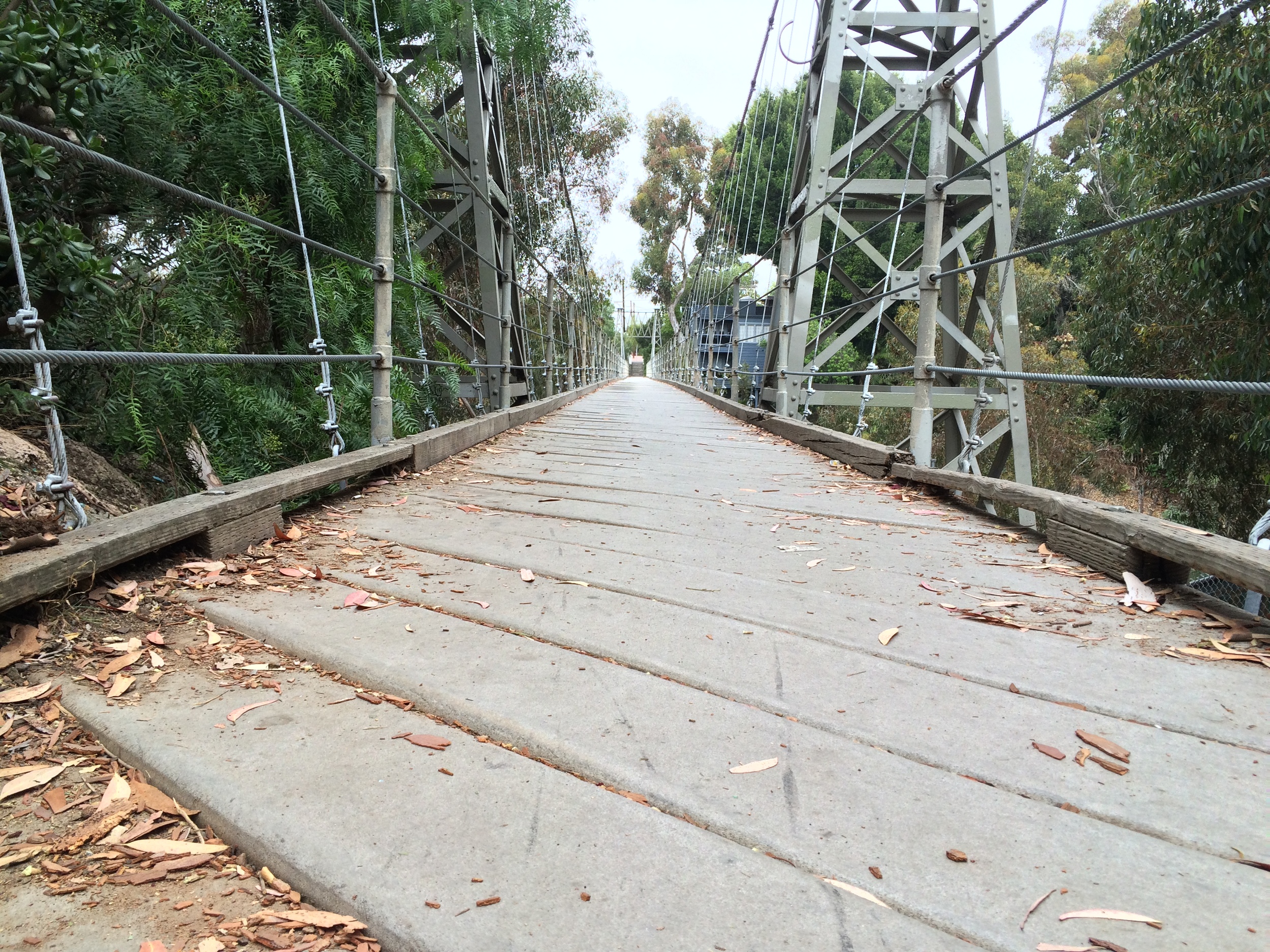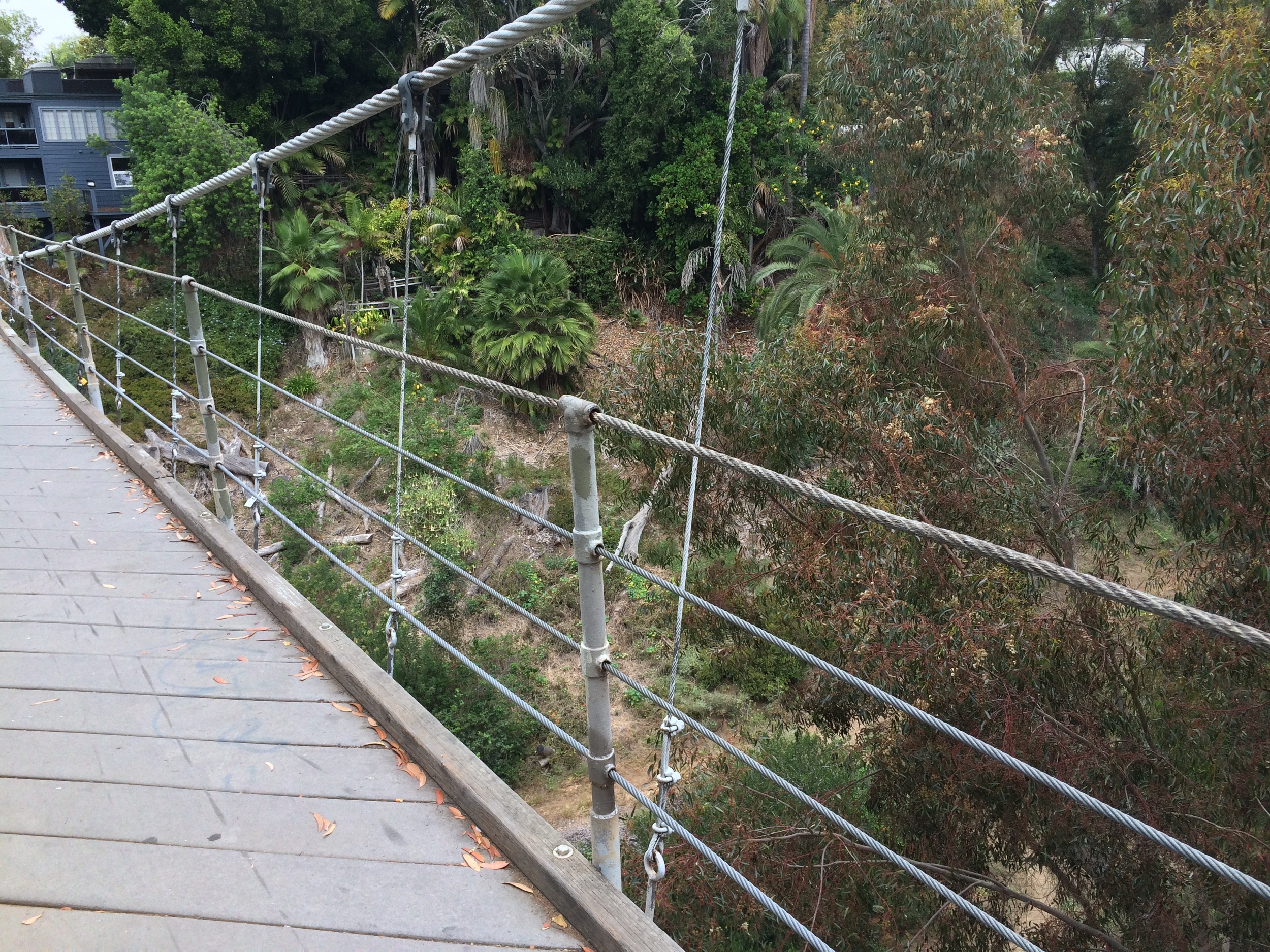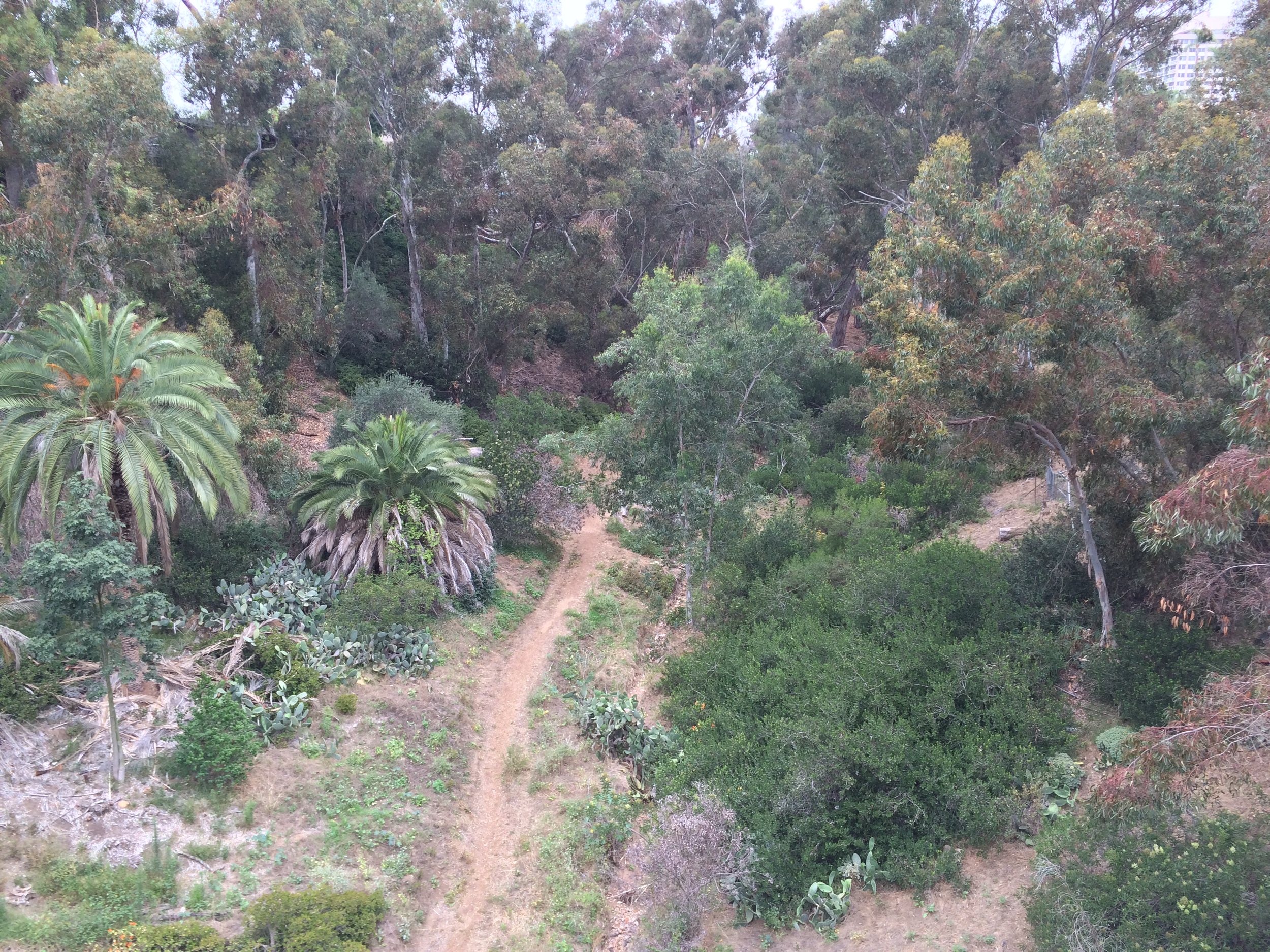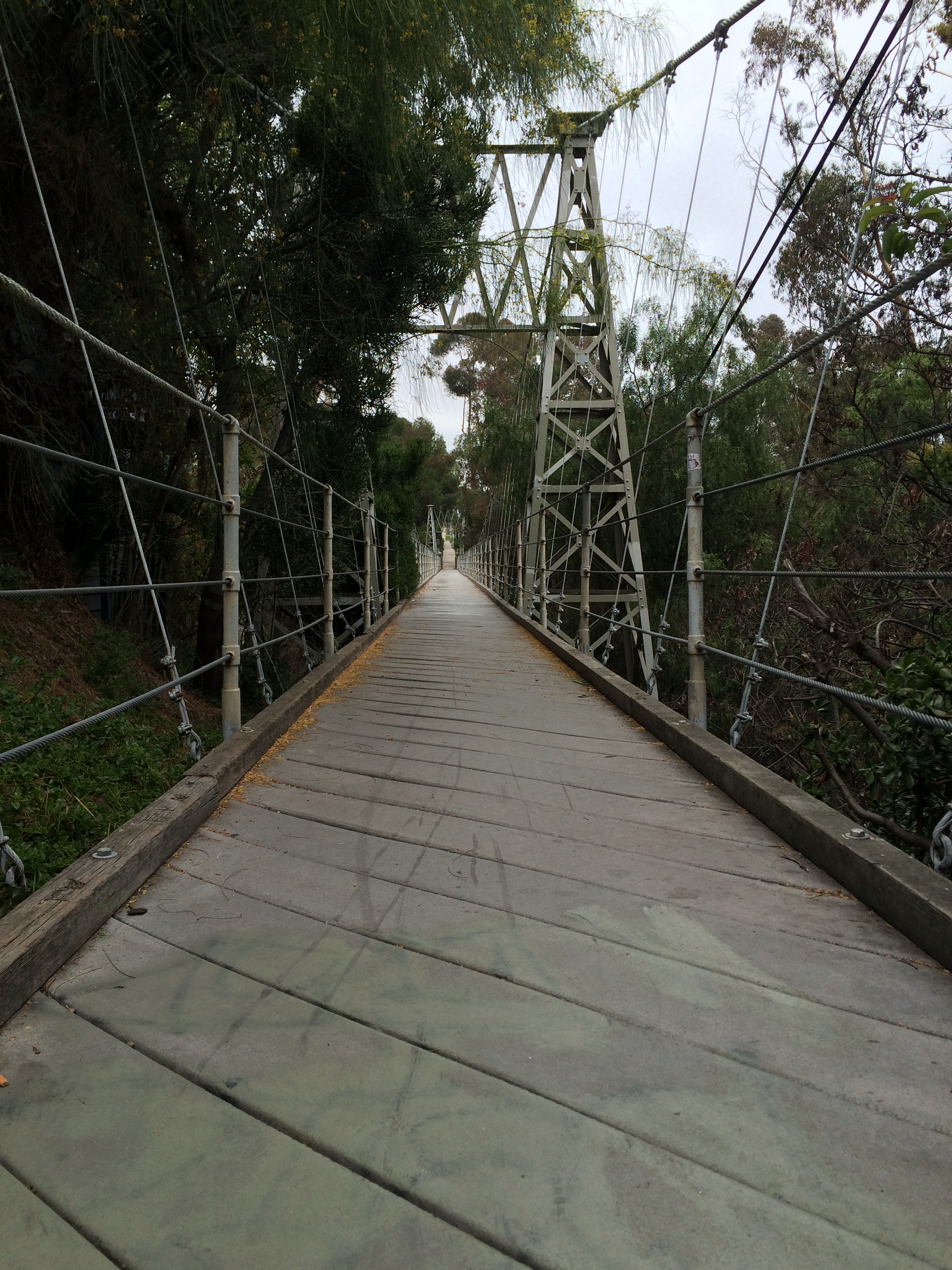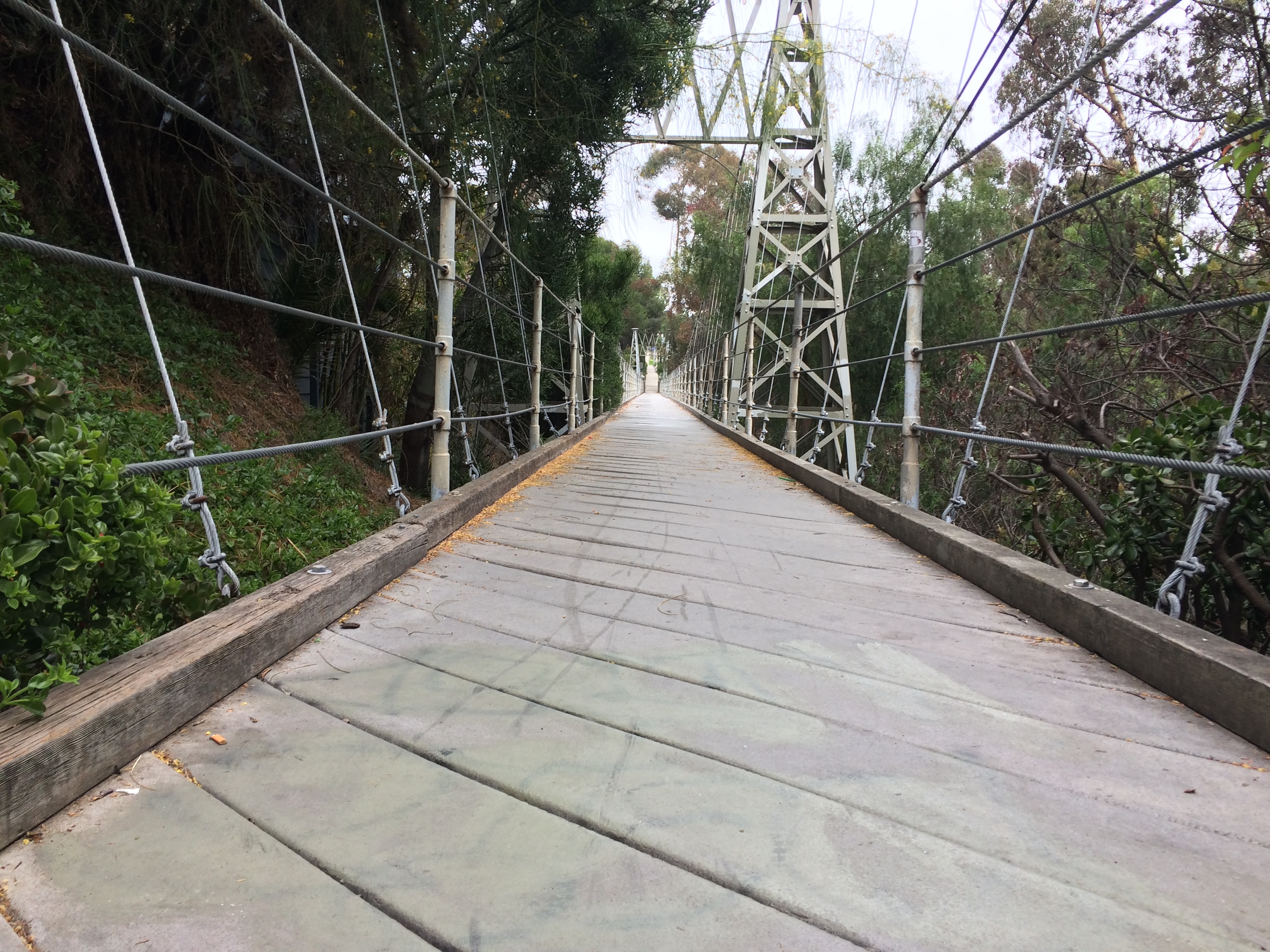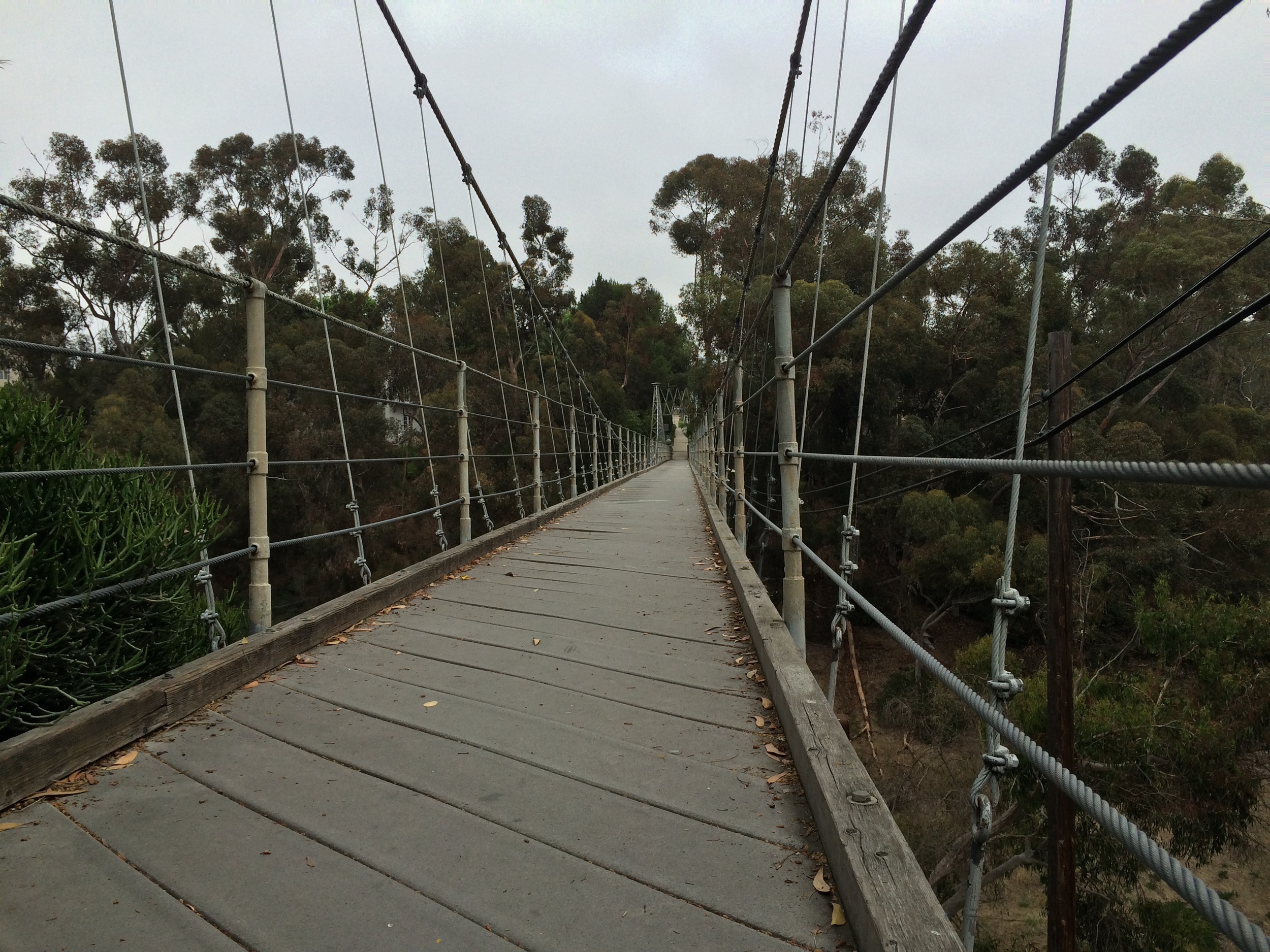One of the unique things about San Diego is that it is a city, and a county that is honeycombed with a number of canyons. While these canyons can present a number of practical challenges – in that roads end and re-start and different locations, they provide great spots to explore in certain cases, and great areas for wildlife to travel to and from various habitats. And, in the case of the Spruce Street Suspension bridge, a great man-made object to walk, run, or saunter across on either an urban hike, or a quick visit to see some of San Diego’s hidden history.
The Spruce Street Suspension Bridge was built in 1912 by the City of San Diego, and was designed by Edwin Capps. The bridge was designed as a pedestrian by-way for the local neighborhoods to the Fourth and Fifth Avenue trolley stops. While the trolley lines are long gone, the bridge remains today, and has become a popular destination for neighborhood locals and tourists alike. At 375 feet in length, and 70 feet in height, it is a visually stunning structure. While it is interesting to look at, it is even more fun to walk across, as it is a suspension bridge. This means that the bridge can sway in the wind; underfoot under a run or back and forth if there is a crowd of people on it trying to move it!
Have no fear – even though the bridge moves – this is natural. It was designed to sway, and even though it is over a hundred years old, it is regularly inspected by the City of San Diego, and is quite safe. Having said that, the seventy foot distance above Kate Sessions Canyon from the bridge appears higher than it is, and the cable railing along the bridge is somewhat low. People who are scared of heights, falls, or moving bridges probably should not visit – or walk across the bridge as it is exposed. Again, having said that, it is entirely safe, so there is nothing to fear.
Directions: The best way to access the bridge is from the intersection of First Street and Spruce, in the Bankers Hill region of San Diego. From First Street, turn right (West) onto Spruce Street. From this point, it is a half-block walk to the eastern entrance of the bridge which is readily apparent and well signed. Alternatively, visitors can start on the Western side (Brant Street), but directions to that point are slightly more complicated given the aforementioned canyon network in the area.
Tips: While the bridge may have been hidden in 1912, today, it is a well-known San Diego “secret”. This means that on the weekends, and even on many weekdays, many people will be on the bridge. However, it is not Sea World: visitors – and photographers who want the bridge to themselves will have opportunities to check it out on their own. My personal recommendation is to visit in the mornings on a weekday. Finally, visitors should bear in mind that as the bridge is in a residential area, there are use restrictions and noise restrictions on it from 10 pm to 6 am, year round. Have respect for the locals; and enjoy your time swaying above the trees.


